Bukit Lawang
On the island of Sumatra, a hundred kilometers from the largest city of Medan, there is the village of Bukit Lawang.
This is a place completely forgotten by Allah on the other side of the world, to which for some reason travelers from all over the world come. The fact is that behind this village rainforests begin, in which rare animals and plants are found.
For example, there are only two places on the whole planet where orangutans are found. Sumatra Island is one of them, and the easiest way to get into the local jungle is from Bukit Lawang.
It takes about three hours to get to the village on a very bad road on a shaking minibus. To make it in time for the day and return to Medan before dark, you have to get up at five in the morning.
At the entrance to the village there is a cute orangutan.
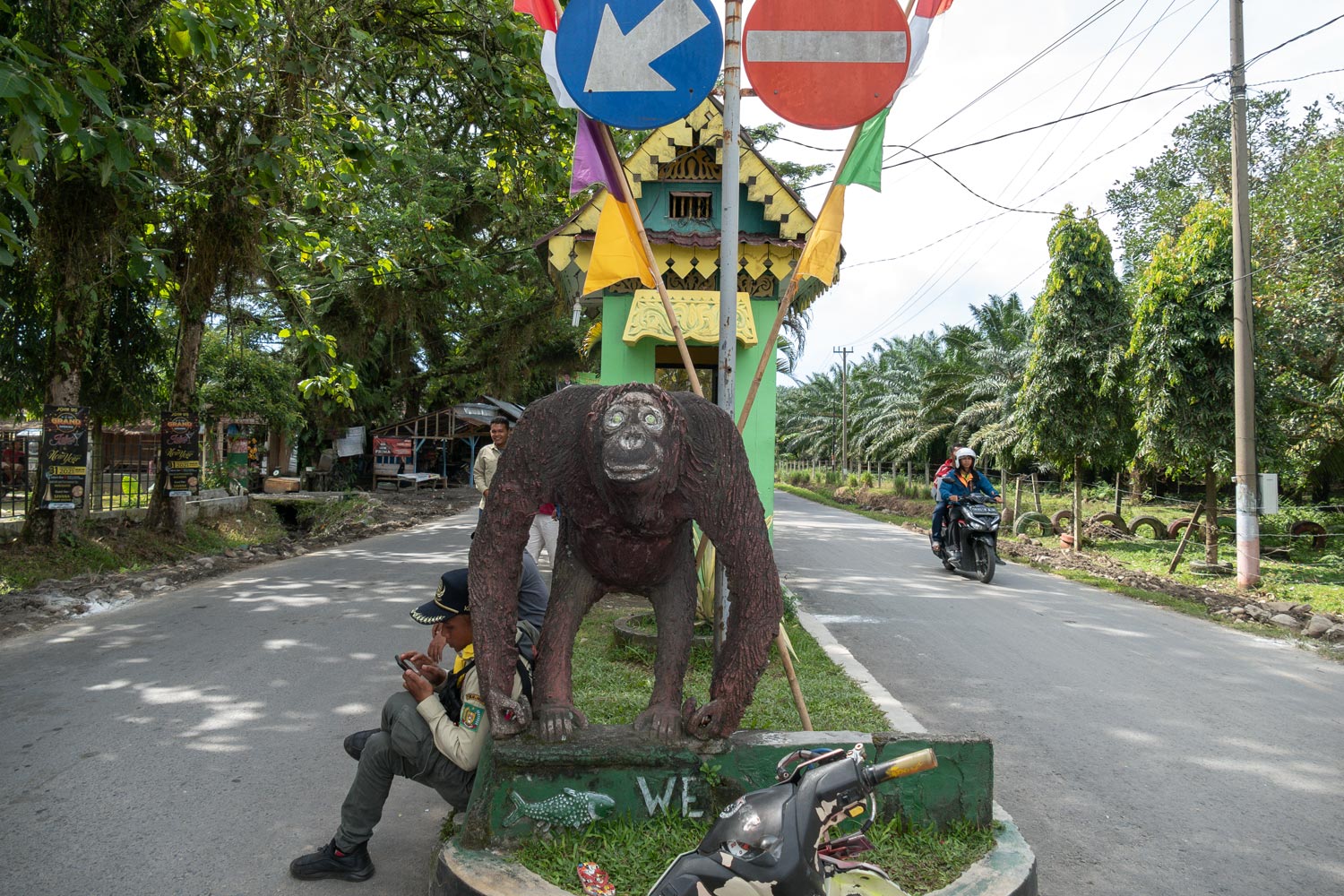
In principle, you can find a guide right at the bus station, but it’s better to negotiate with someone adequate. For example, with a guy named Leng: +62 812-6318-317. The cost of the tour for the day is about 40 euros.
You can go into the jungle without a guide. The rule is simple: do not approach the orangutans closer than three meters. There is only one aggressive orangutan in the jungle that has attacked people a couple of times, but he usually hangs out deep in the forest.
There is a river flowing in the village, which is crossed by a cool suspension bridge.
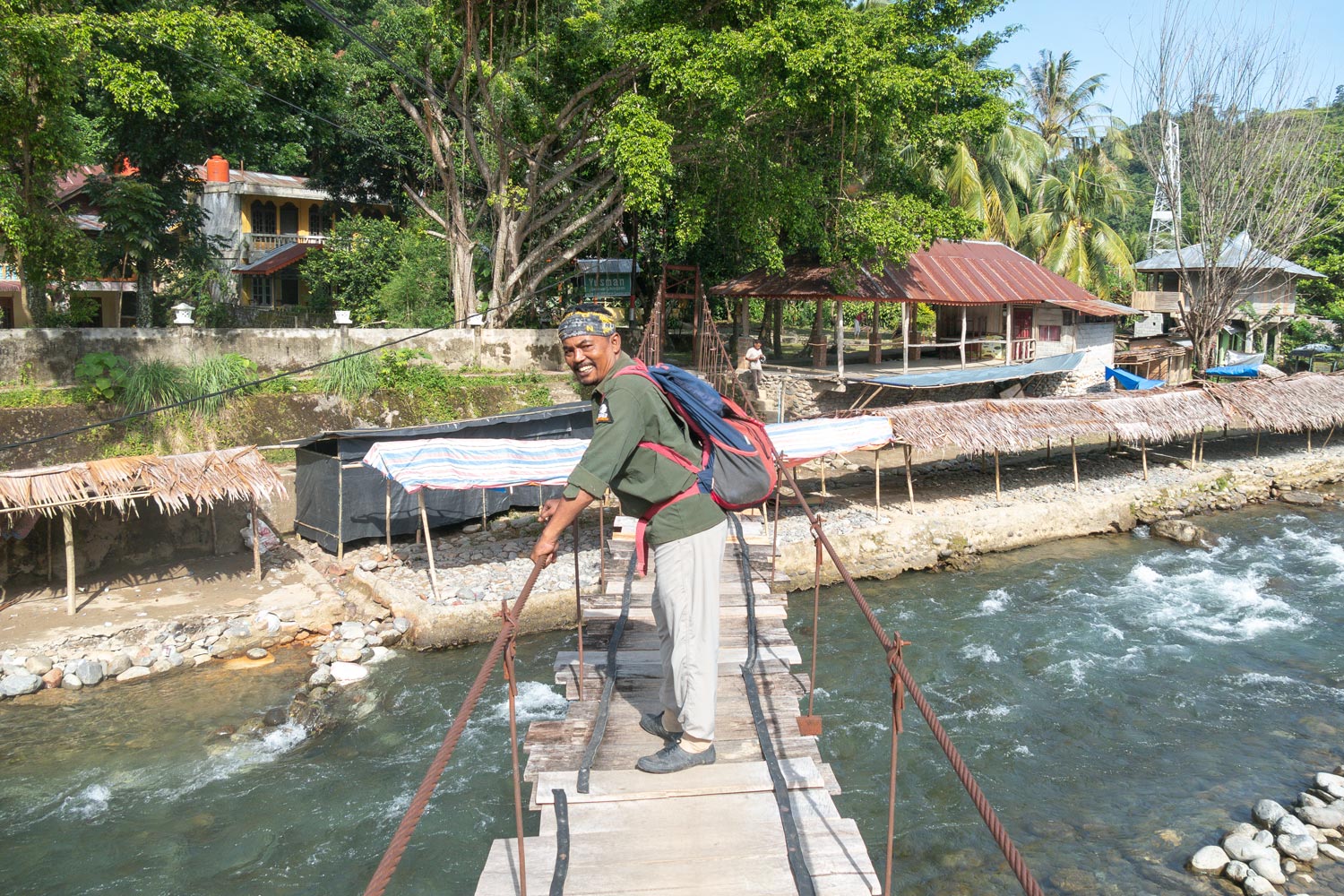
Many Europeans come here to live and study monkeys, so you can meet absolutely luxurious mansions.
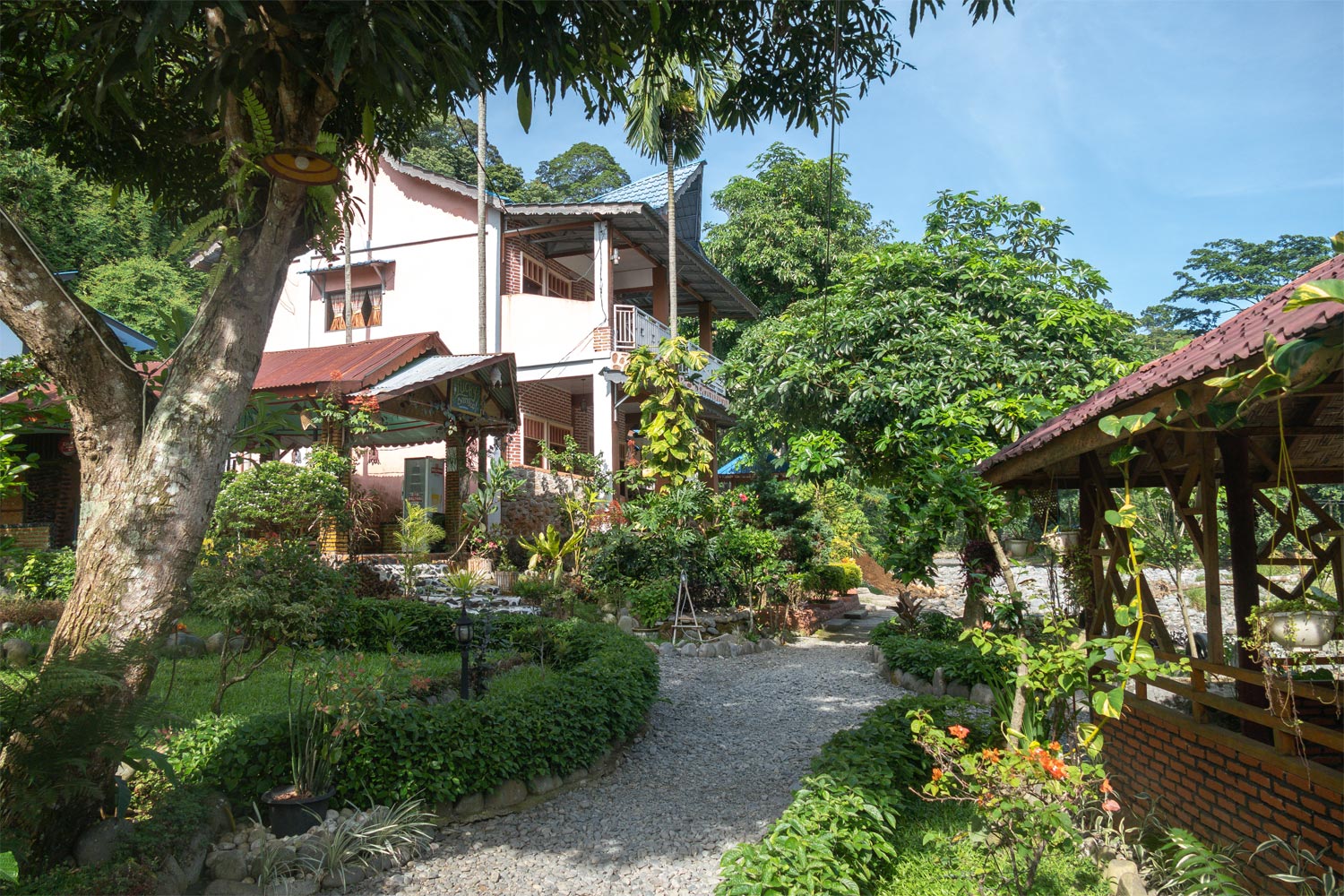
That’s where you need to climb the hills behind them, where the jungle begins. Now you need to walk back and forth on them in the hope of finding an orangutan.
Walking through the jungle is not an easy thing. It’s full of thorns, roots, vines and sharp descents. I have to climb, clinging to trees. You can scratch yourself or jump off your foot into the river. Nothing poisonous grows here, but when you meet with such a thorn, it will hurt:
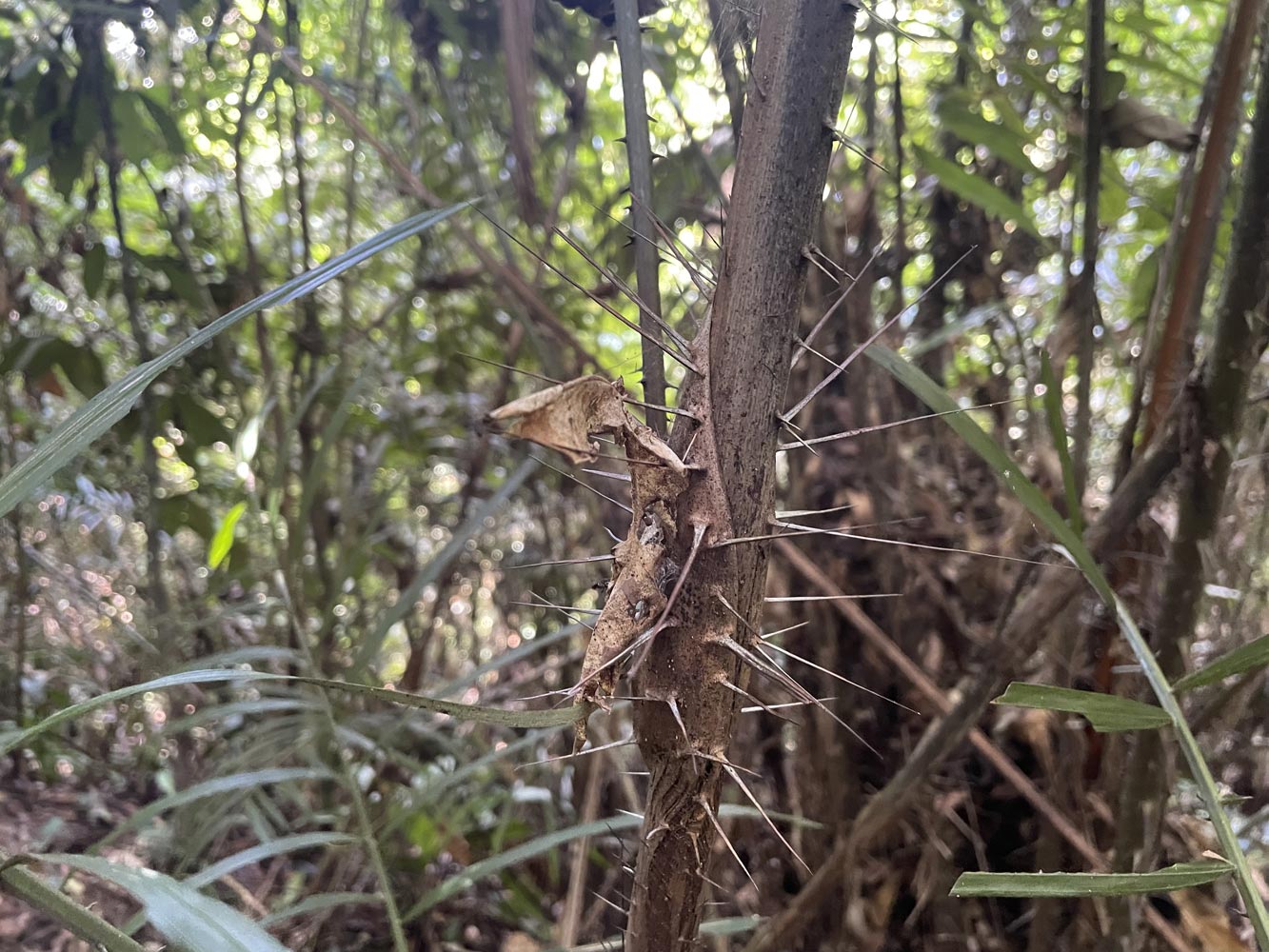
And an orangutan can never be found. Someone comes across it in ten minutes, and someone walks for hours and returns the next day. The guide helps well here. He doesn’t know exactly where to look, because orangutans are constantly roaming. But he distinguishes the right sounds well and makes his own.
Traces of vital activity: devoured leaves. Orangutans are too lazy to go to the river, so they drink, gorging on palm stalks.
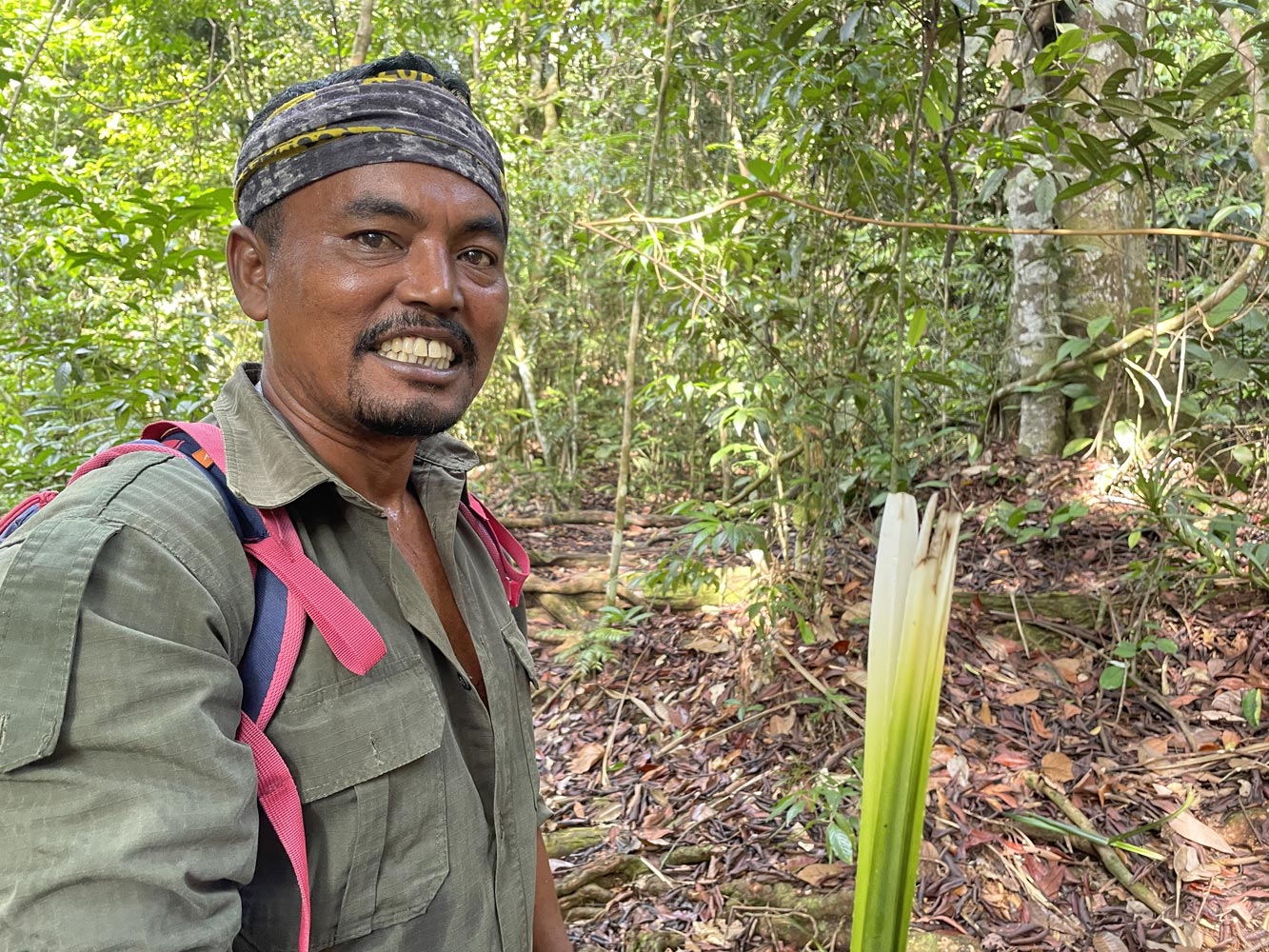
Here’s another one. Chewed bark.
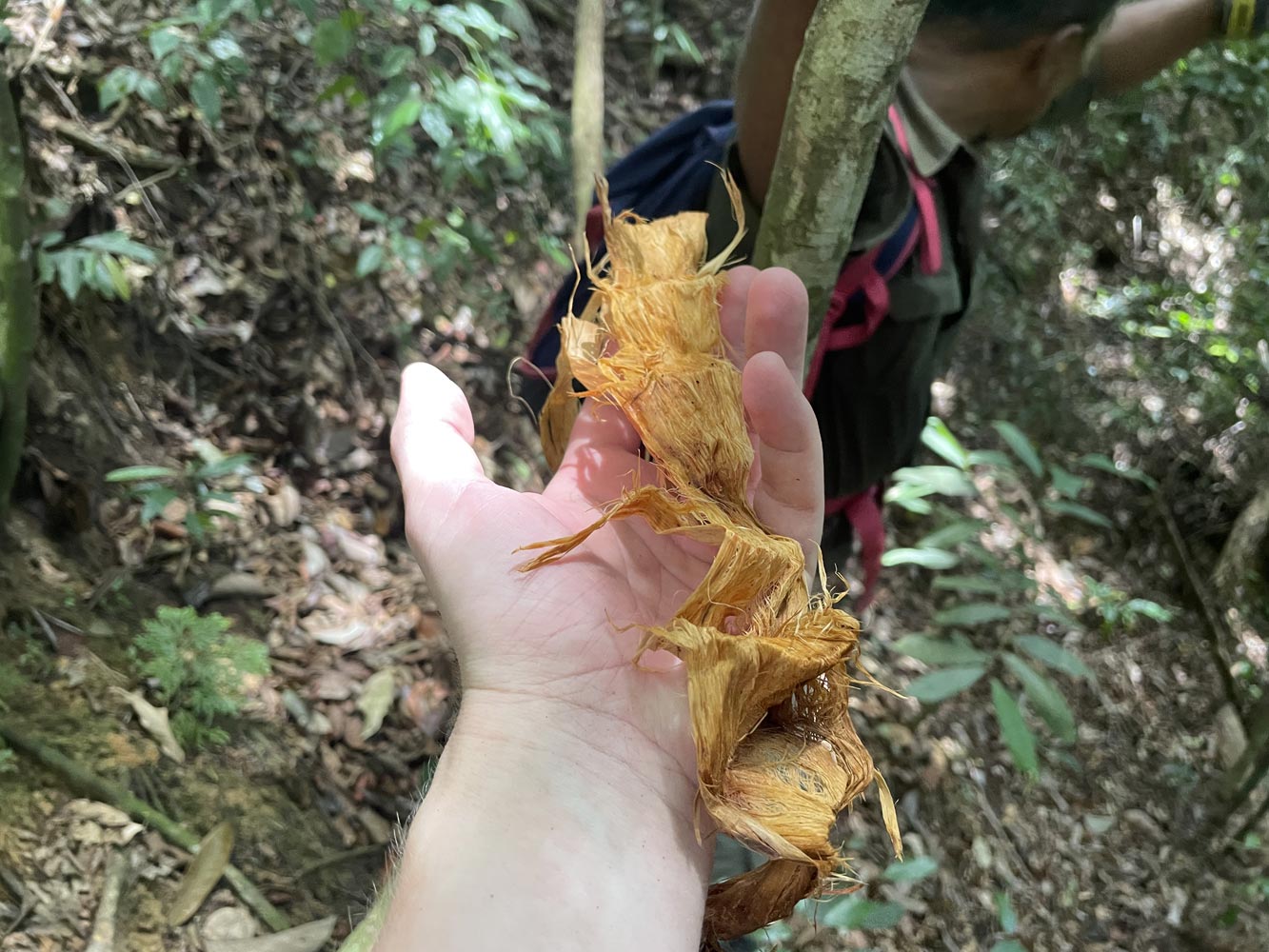
The first monkey comes across, but it’s not an orangutan.
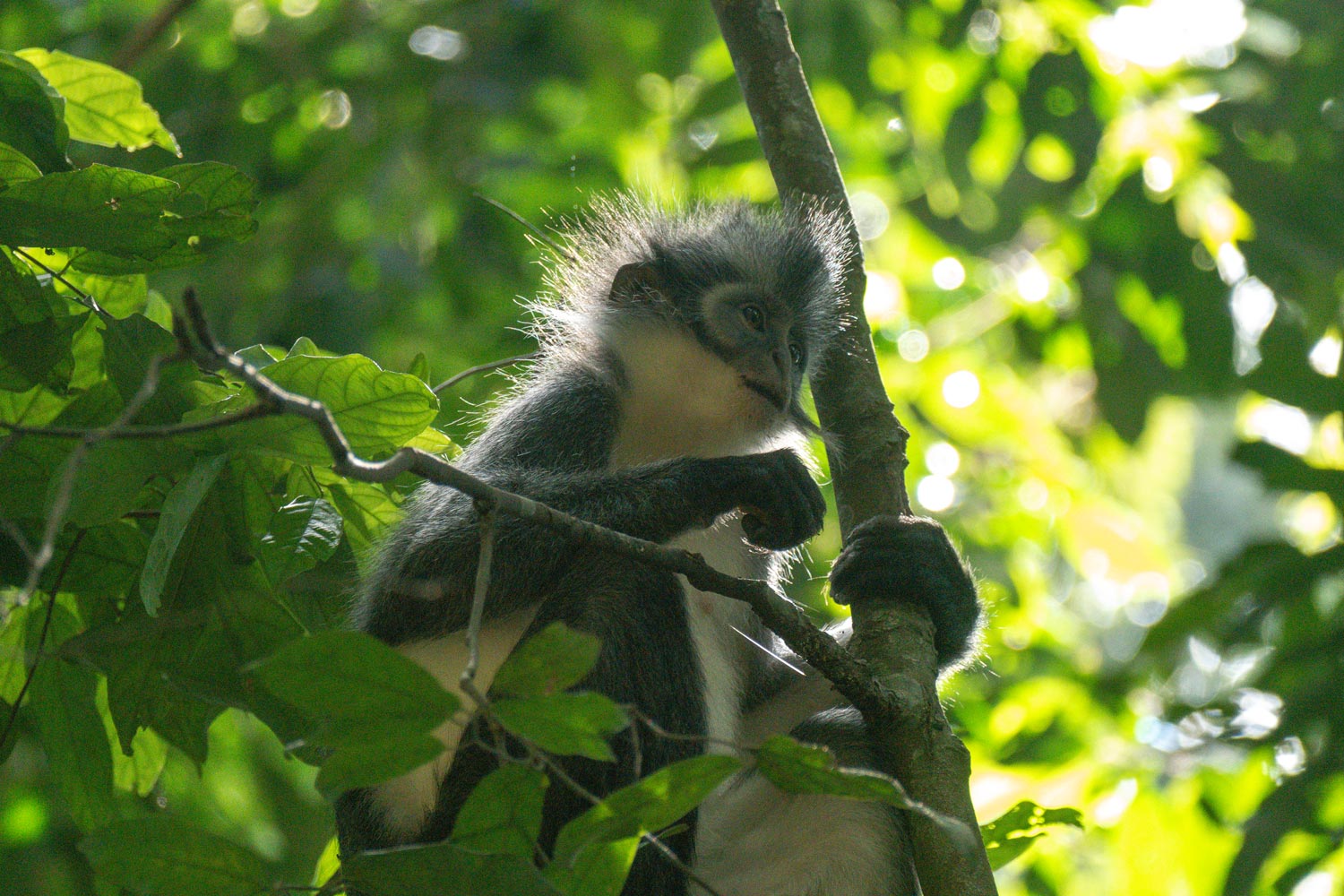
This is Thomas' monkey.
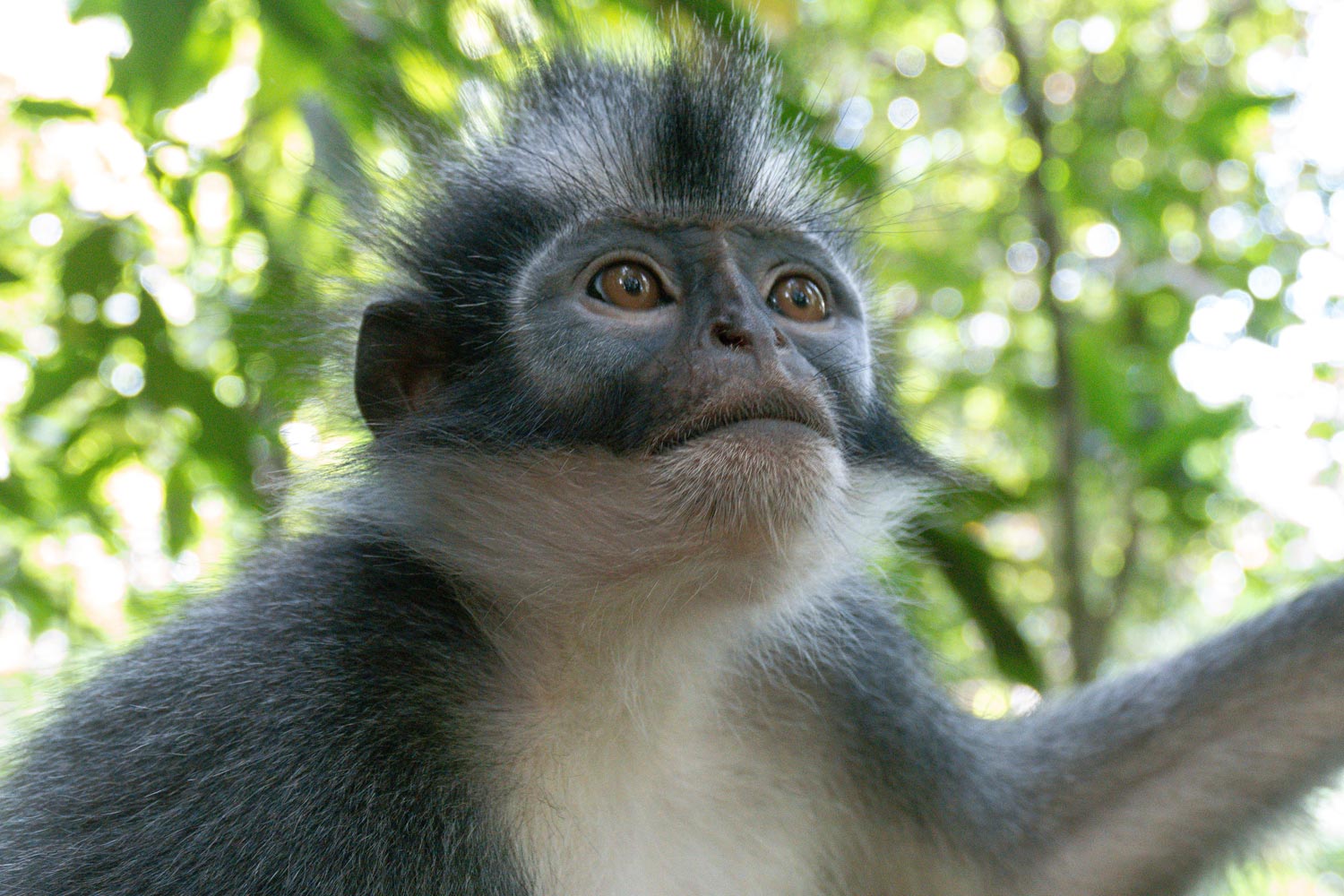
Absolutely the coolest thing. Thomas' monkey is found exclusively in Sumatra, and only in the north. There is no more of this species anywhere on the planet.
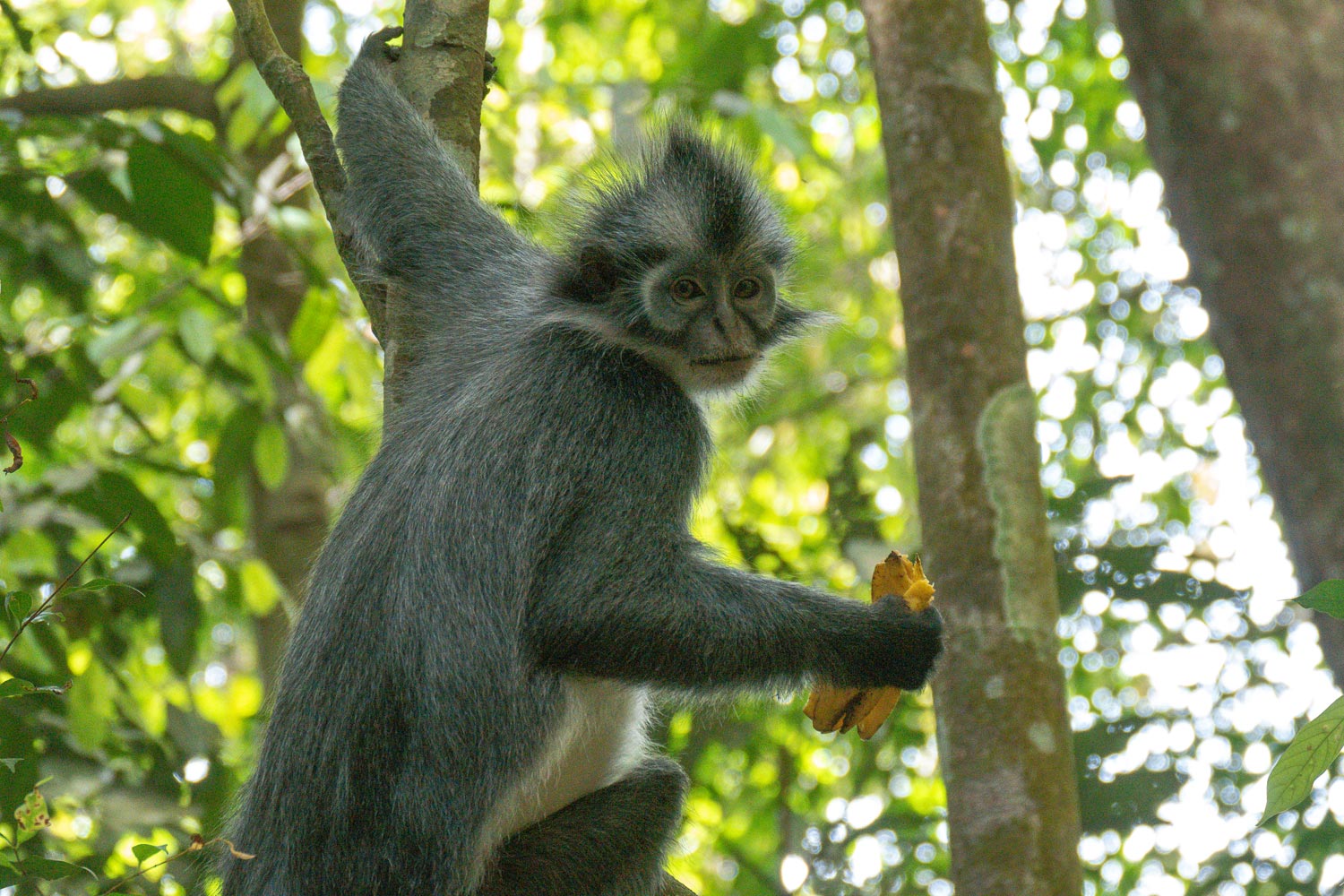
This is a vulnerable species. Over the past 40 years, their number has decreased by a third due to the fact that people with their civilization get to places like Bukit Lawang.
Thomas’s monkey came down from the vine with a cub, and my mimeter went off scale and it was blown to shreds.
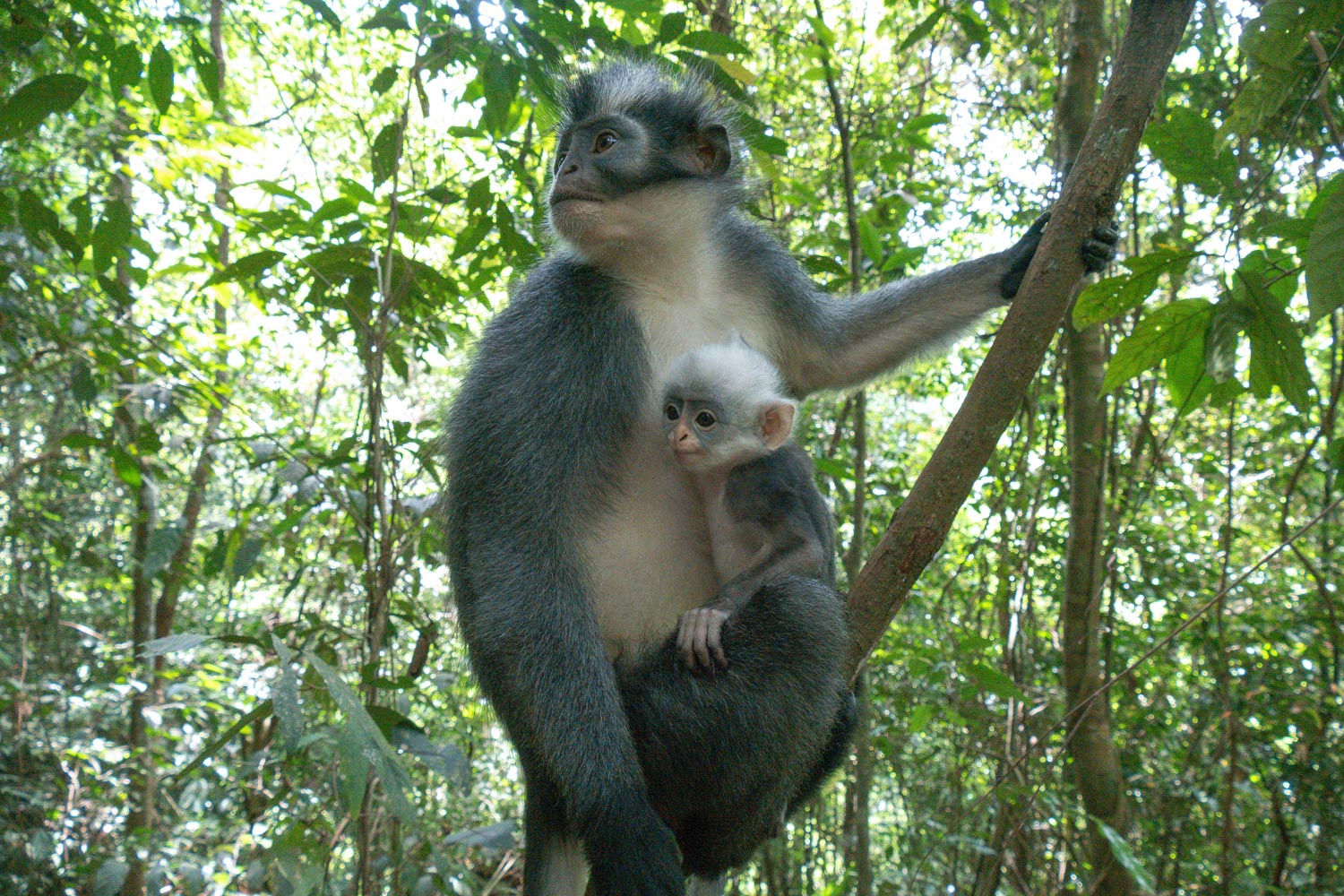
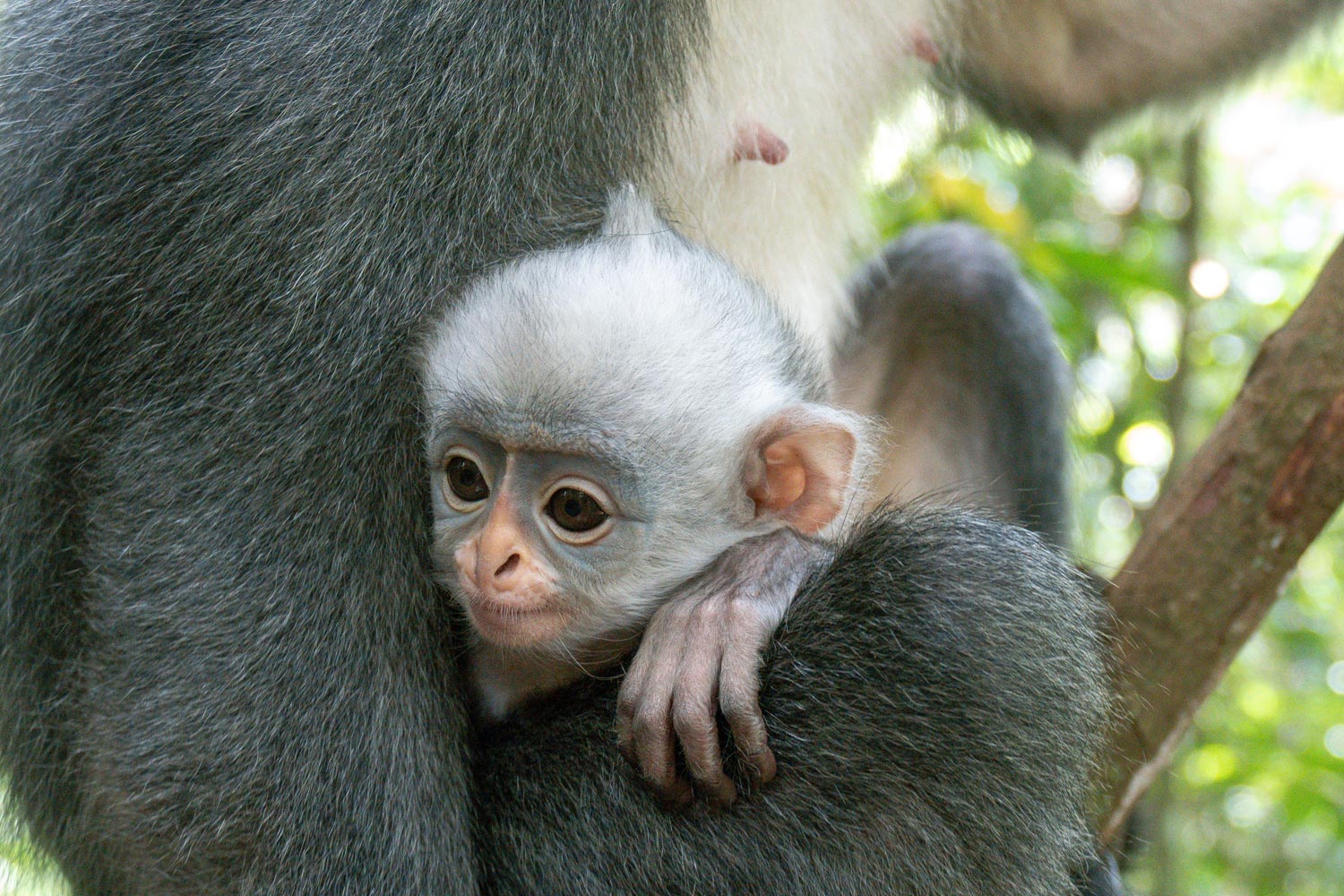
Then I realized that orangutans are overrated. You can’t get close to them, and Thomas' monkey is the friendliest monkey in the world. It can be stroked right in the wild habitat. When the mother monkey allowed me to touch her cub by the paws, I thought I would die on the spot from delight.
And then an orangutan got out. A wild red-haired carcass, jumping through the trees like a crow.
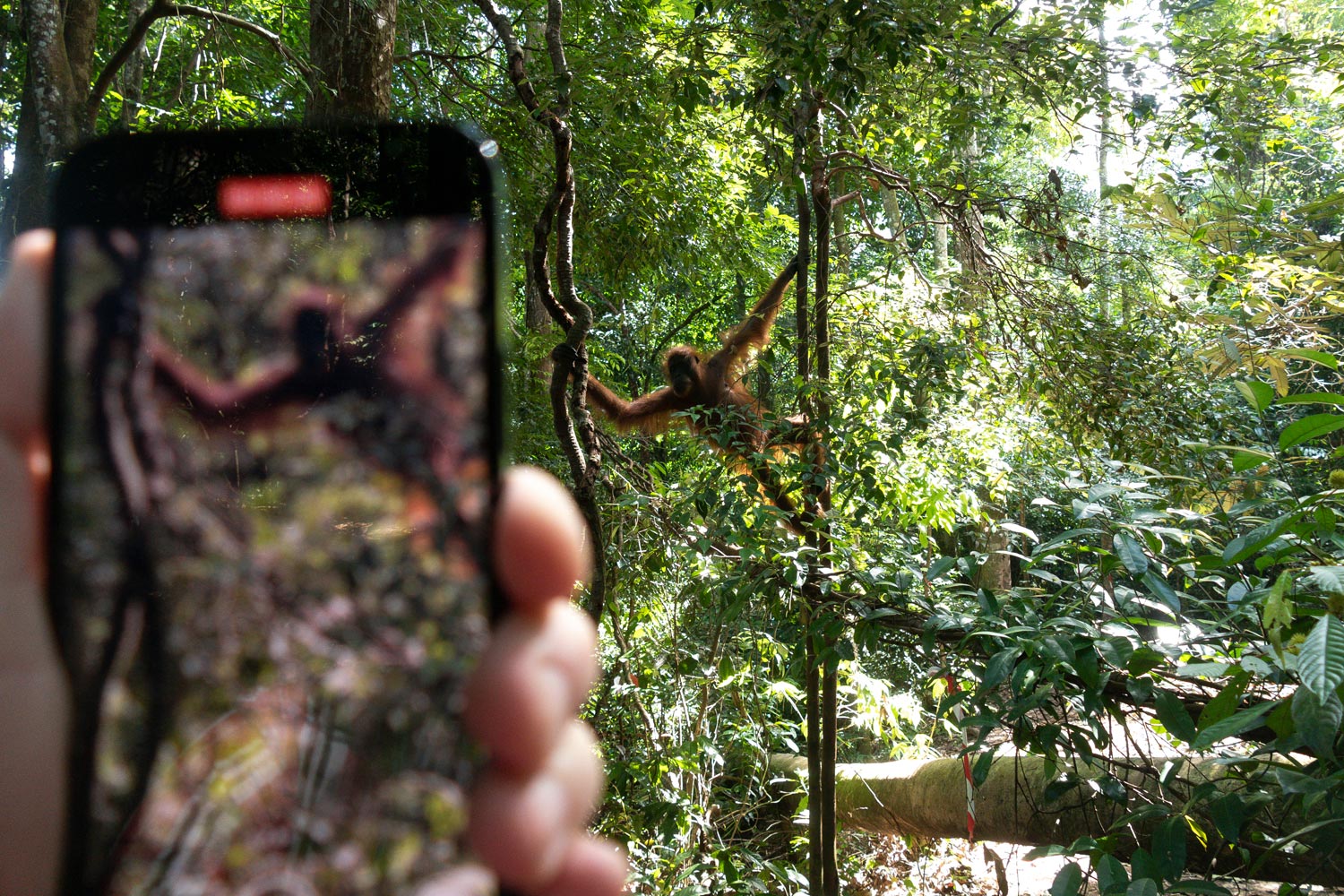
These are not something that they won’t let the cub, you can’t get close to them yourself. Children generally hang on the tops of trees, you can’t shoot without a telephoto lens.
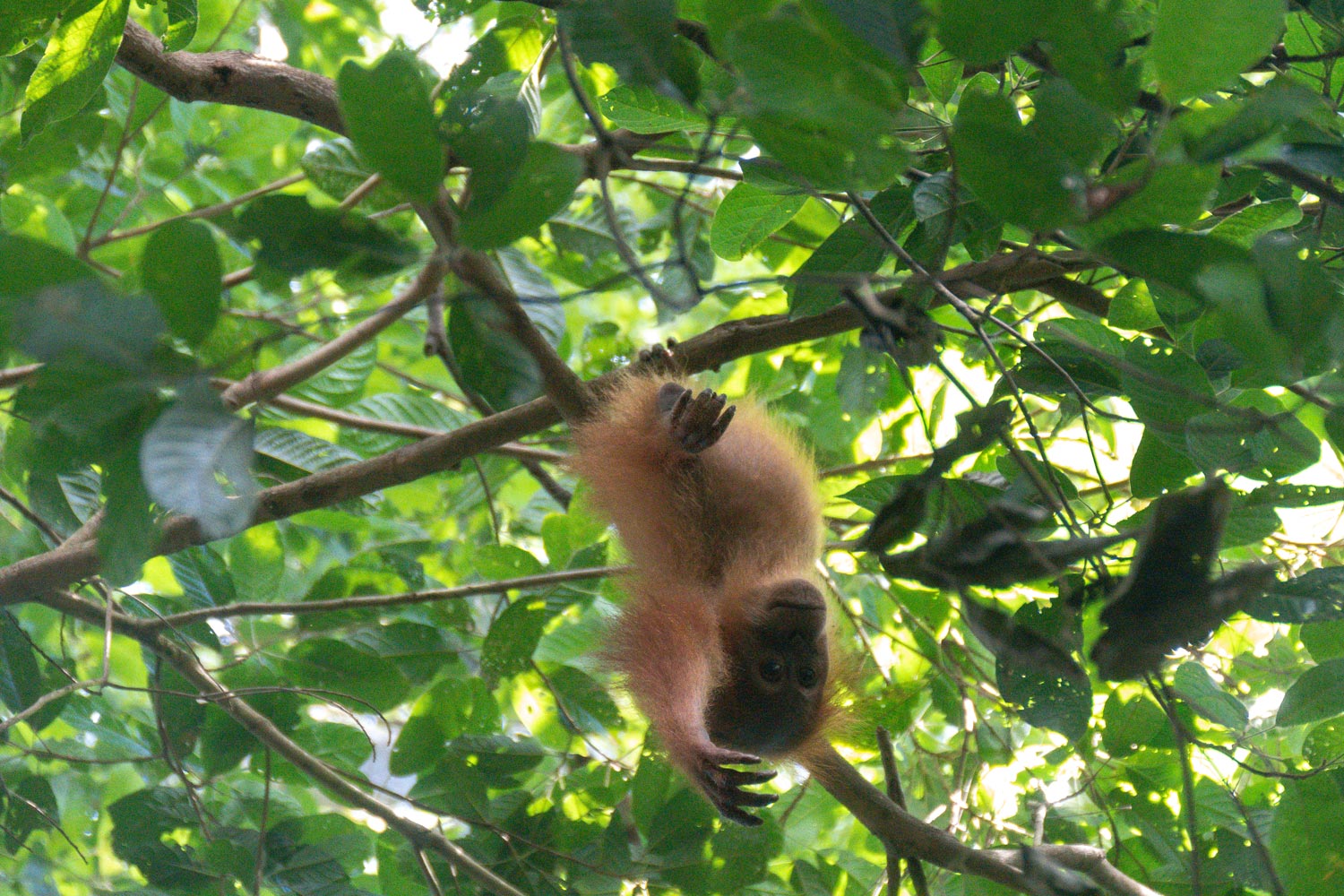
Appeared, muzzle.
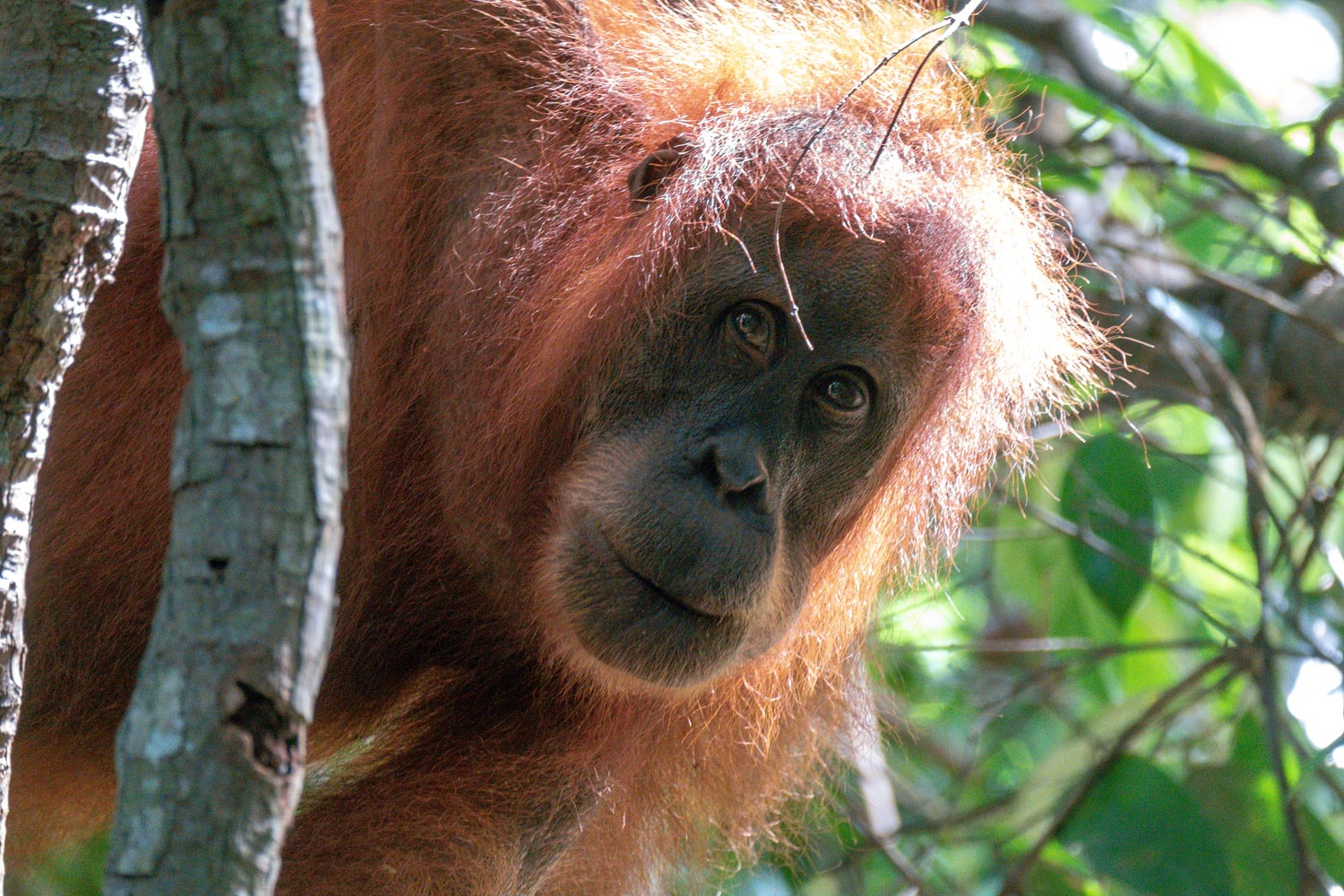
Orangutans are considered the smartest animal on the planet after humans. Although this is debatable: usually the most intelligent animal is considered a chimpanzee.
But the orangutans have one trump card. If a chimpanzee is looking for a natural shelter, then an orangutan builds a house, which is a nest built on top of trees.
Although this is debatable. Everything would be fine if an orangutan built one house and lived in it. But the fact is that the orangutan builds a new nest every day , spends the night in it, then goes to another place and builds the next nest.
Old, withered nests can be found in the crown of trees.
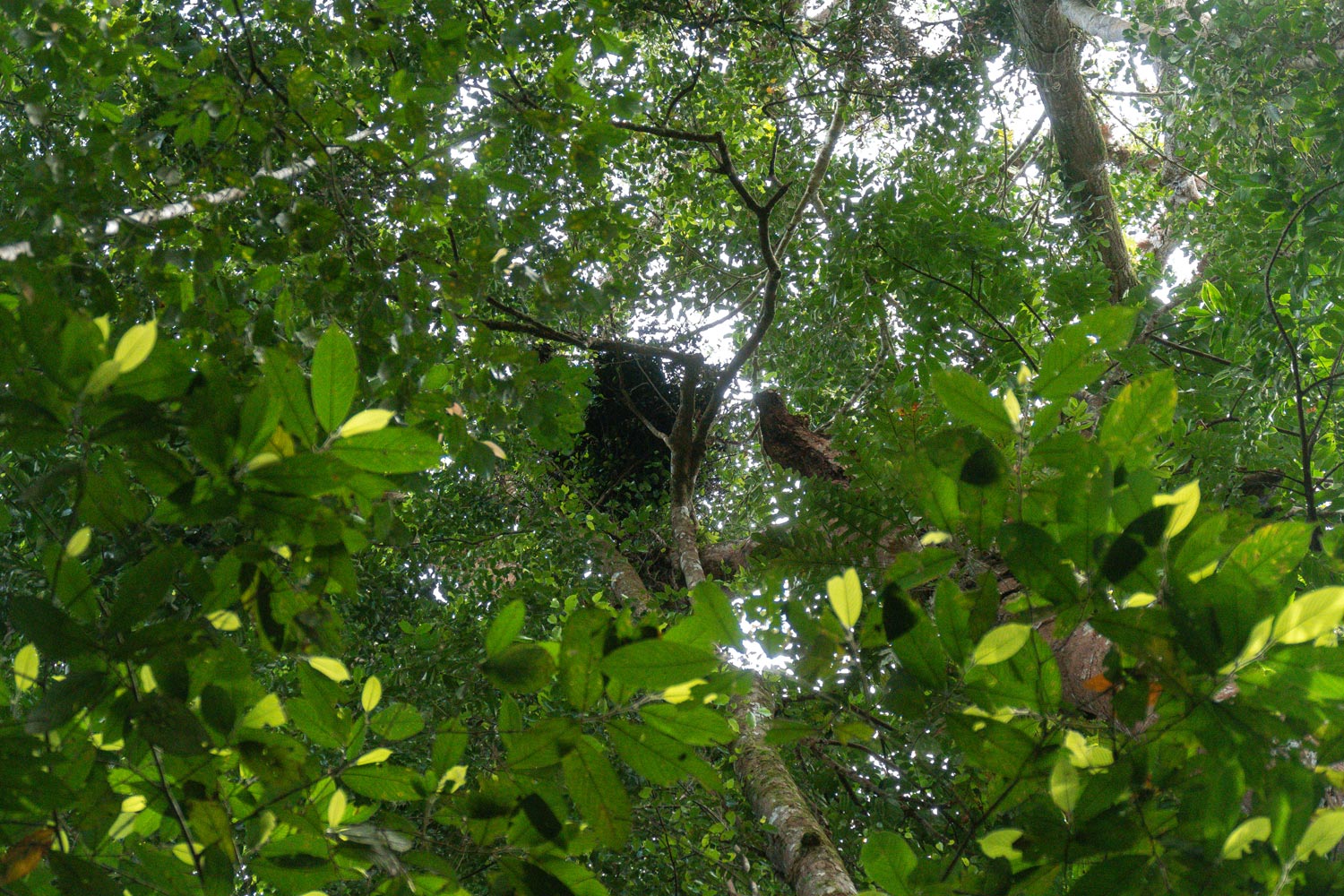
But an orangutan is the closest animal to a human in terms of DNA composition. He’s like a man in general, only he lives in the forest. Its name translates like this: “orang” in Malay means “man”, and “utan” means “forest”.
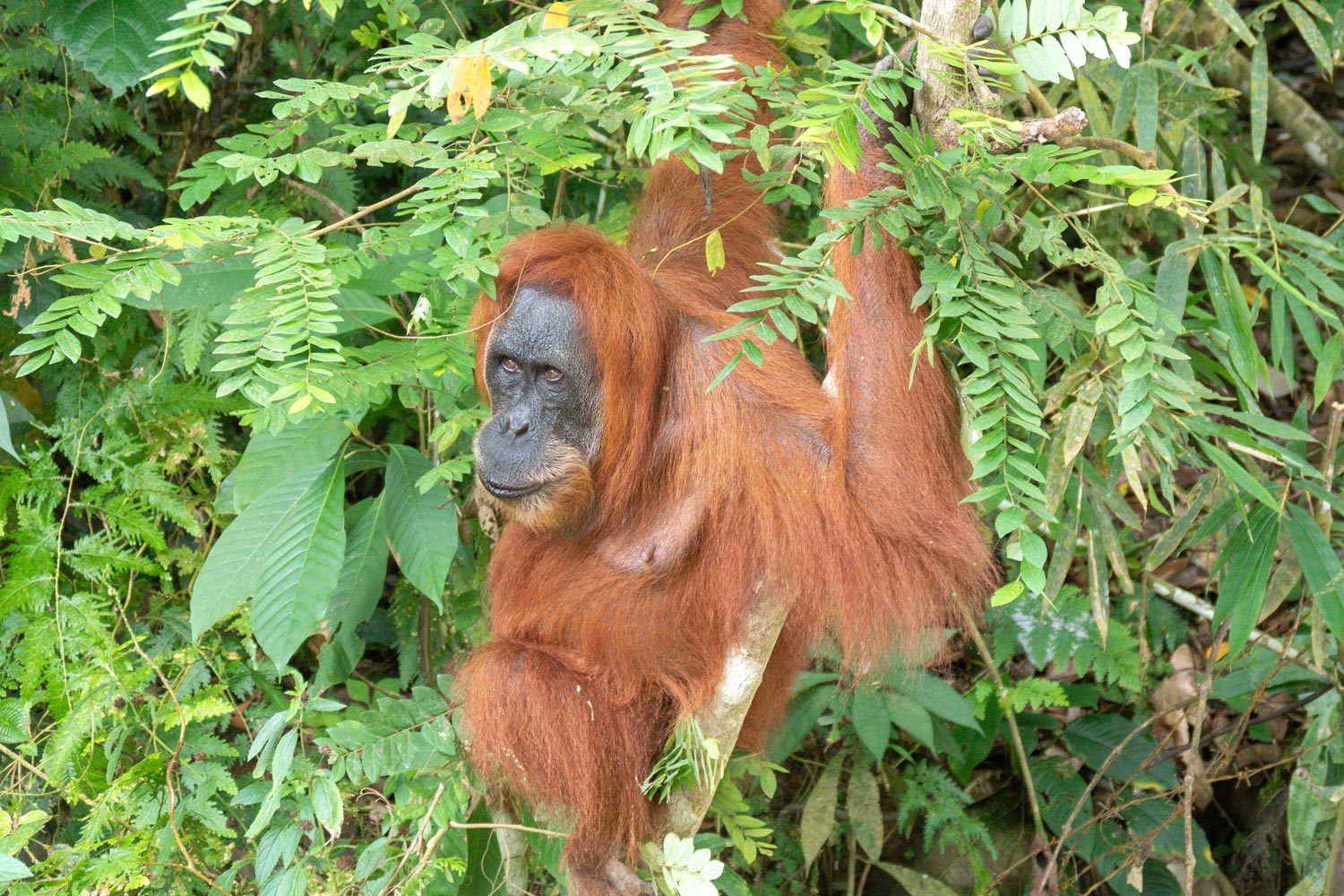
Indeed, the muzzle is almost like a human. He looks like Lavrov.
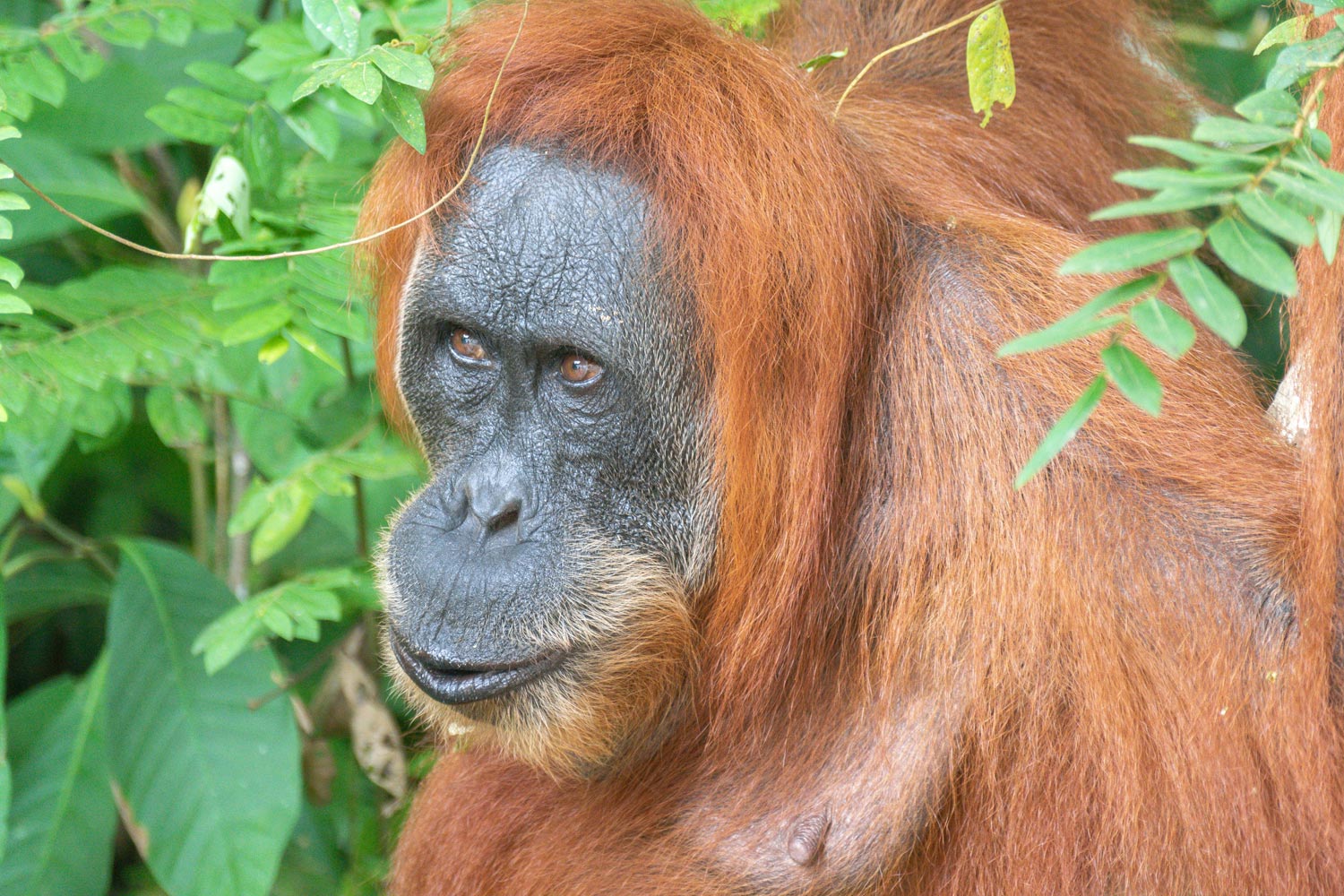
Orangutans are endangered due to deforestation. A couple of generations at this rate, dear Homo Sapiens, and this species will finally die out.
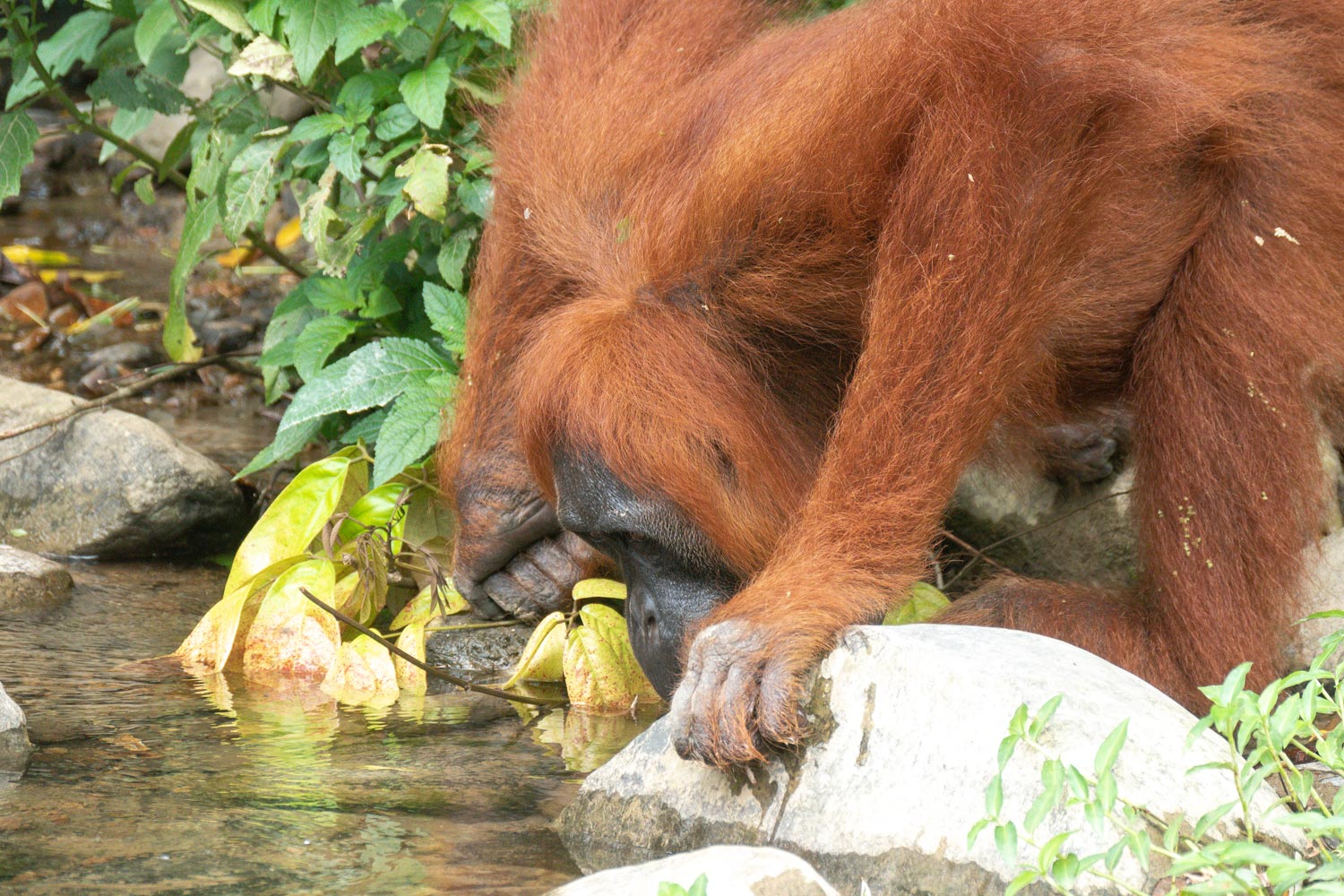
Well, what else to see in the jungle? Giant ants:
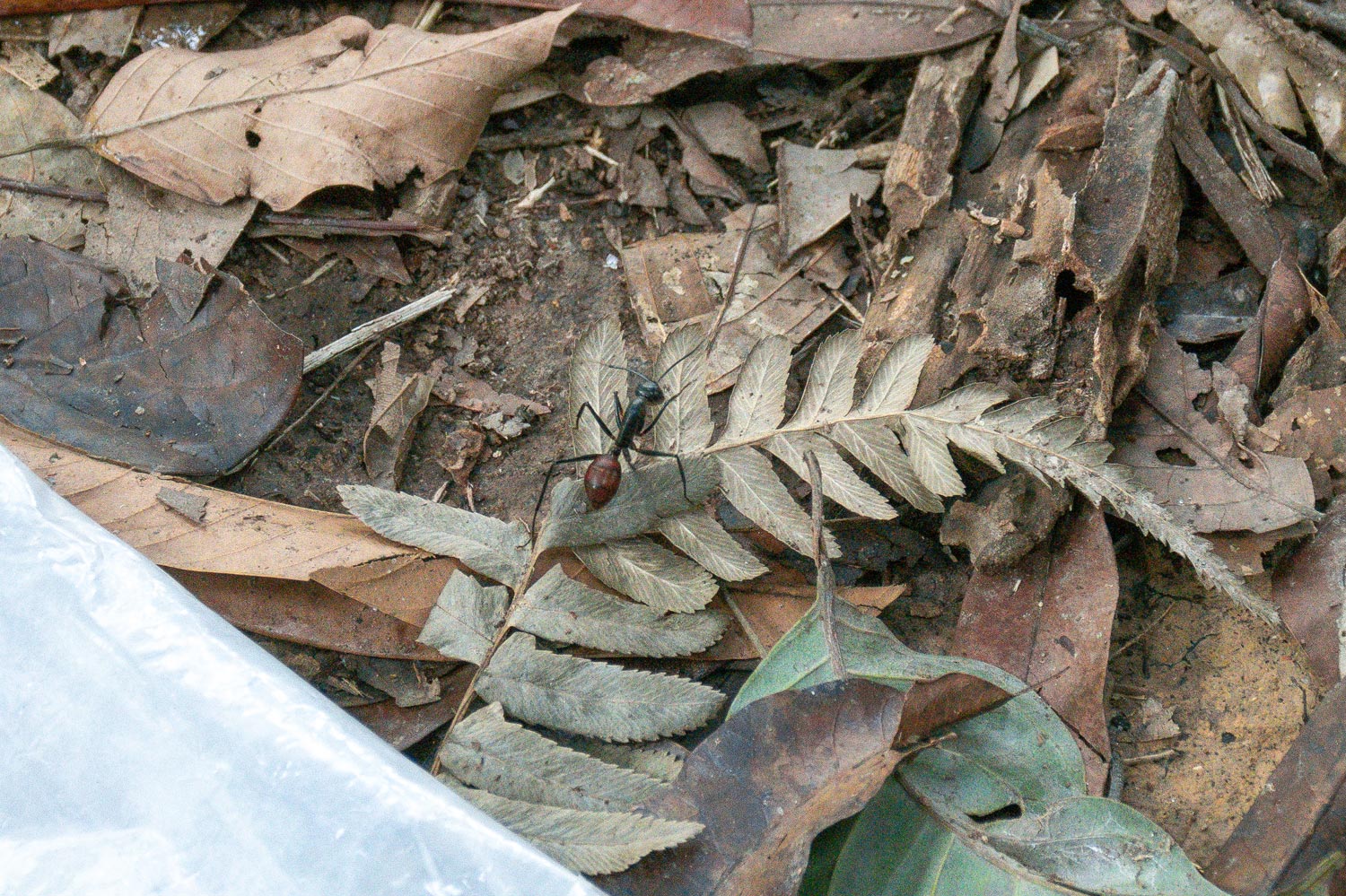
Crazy wicker trees and vines:
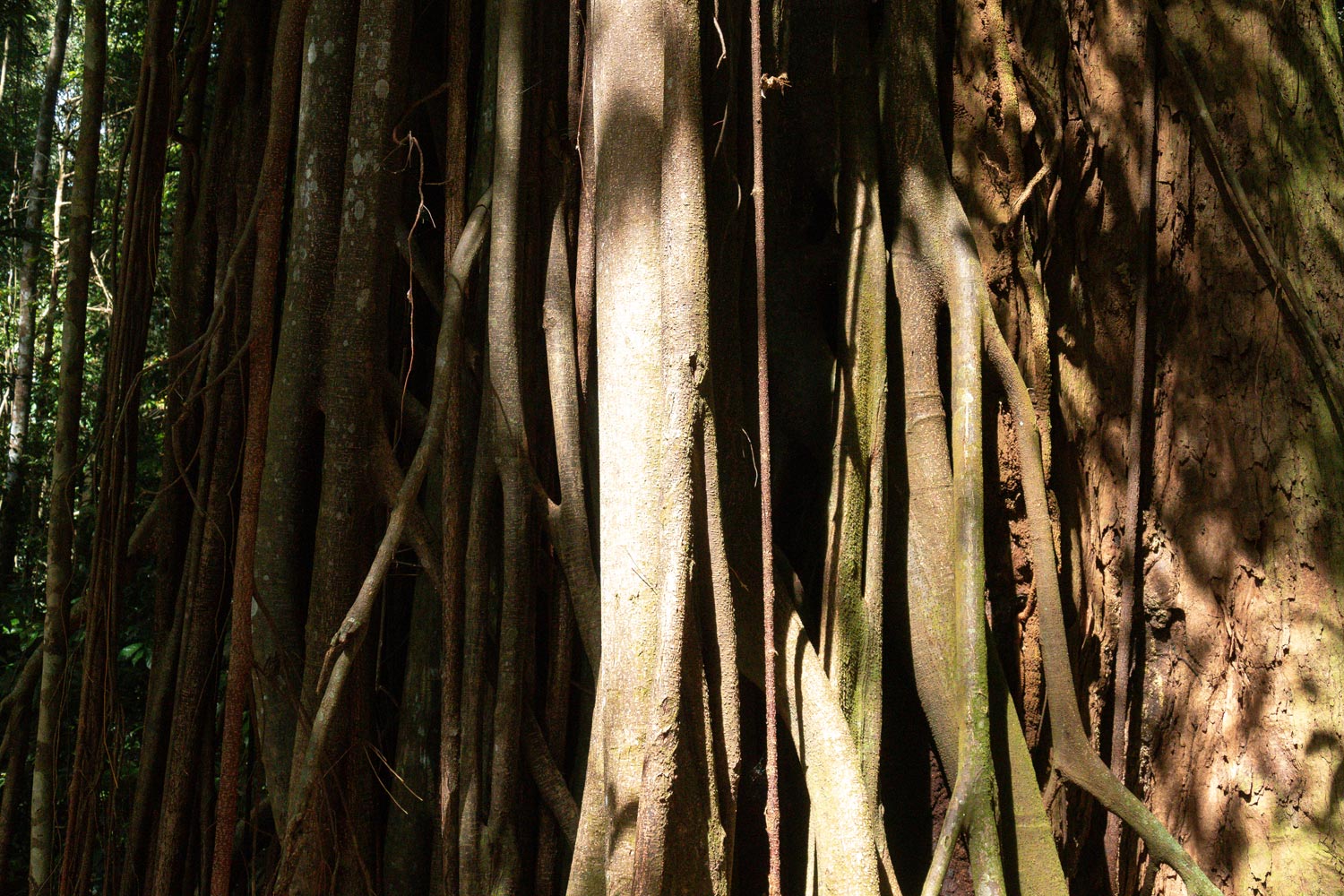
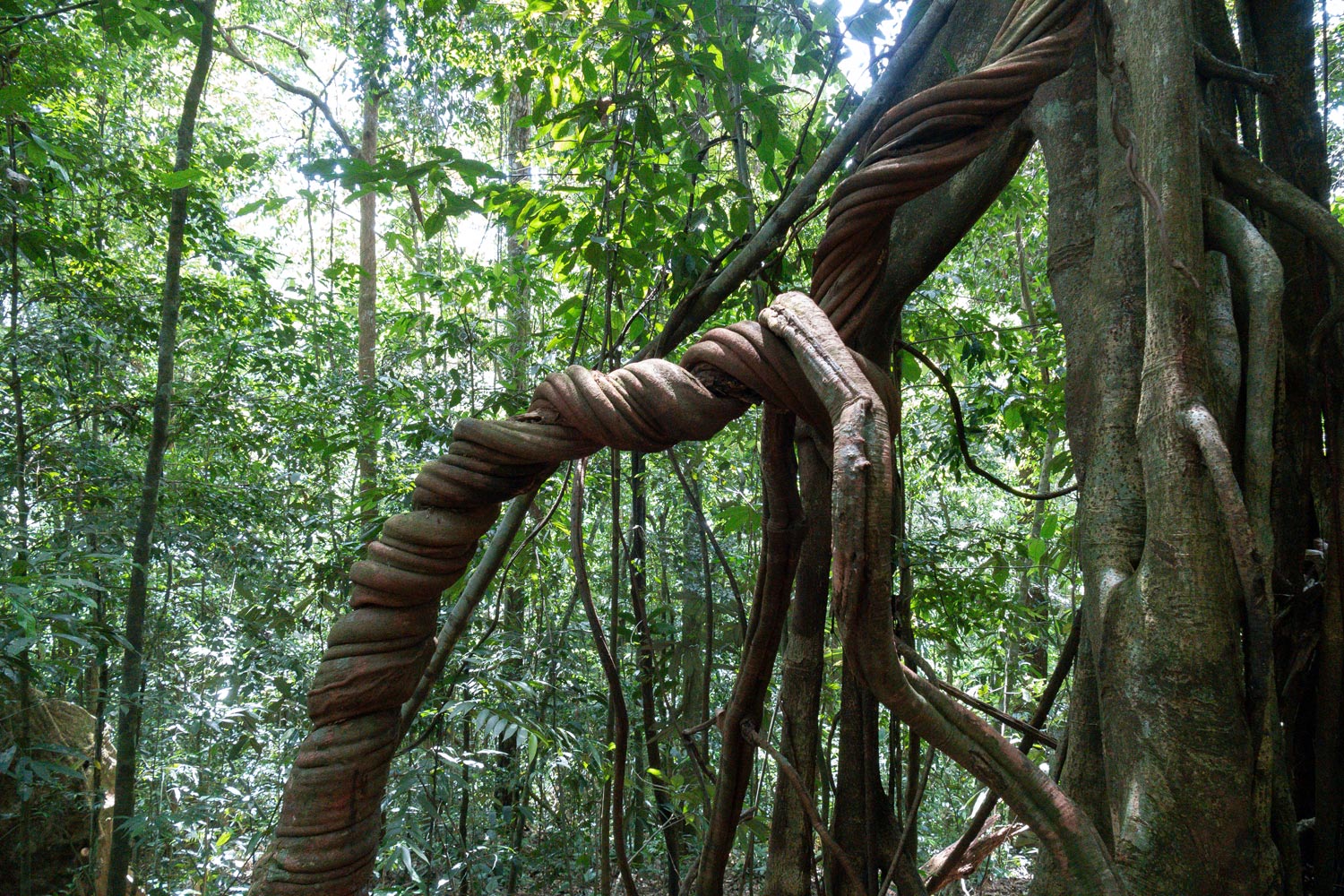
And also a huge smelly flower-an overgrown rafflesia. This plant is a parasite that lives on grape vines. Rafflesia itself does not even have photosynthesis, that is, it exists at the expense of an unfortunate vine, from which it pulls all the juices.
Rafflesia lives for three years to get out of the vine and bloom for a couple of days. The flower can reach a meter in diameter, and weigh several kilograms. It smells like decomposing meat, so rafflesia is also called “corpse lily”.
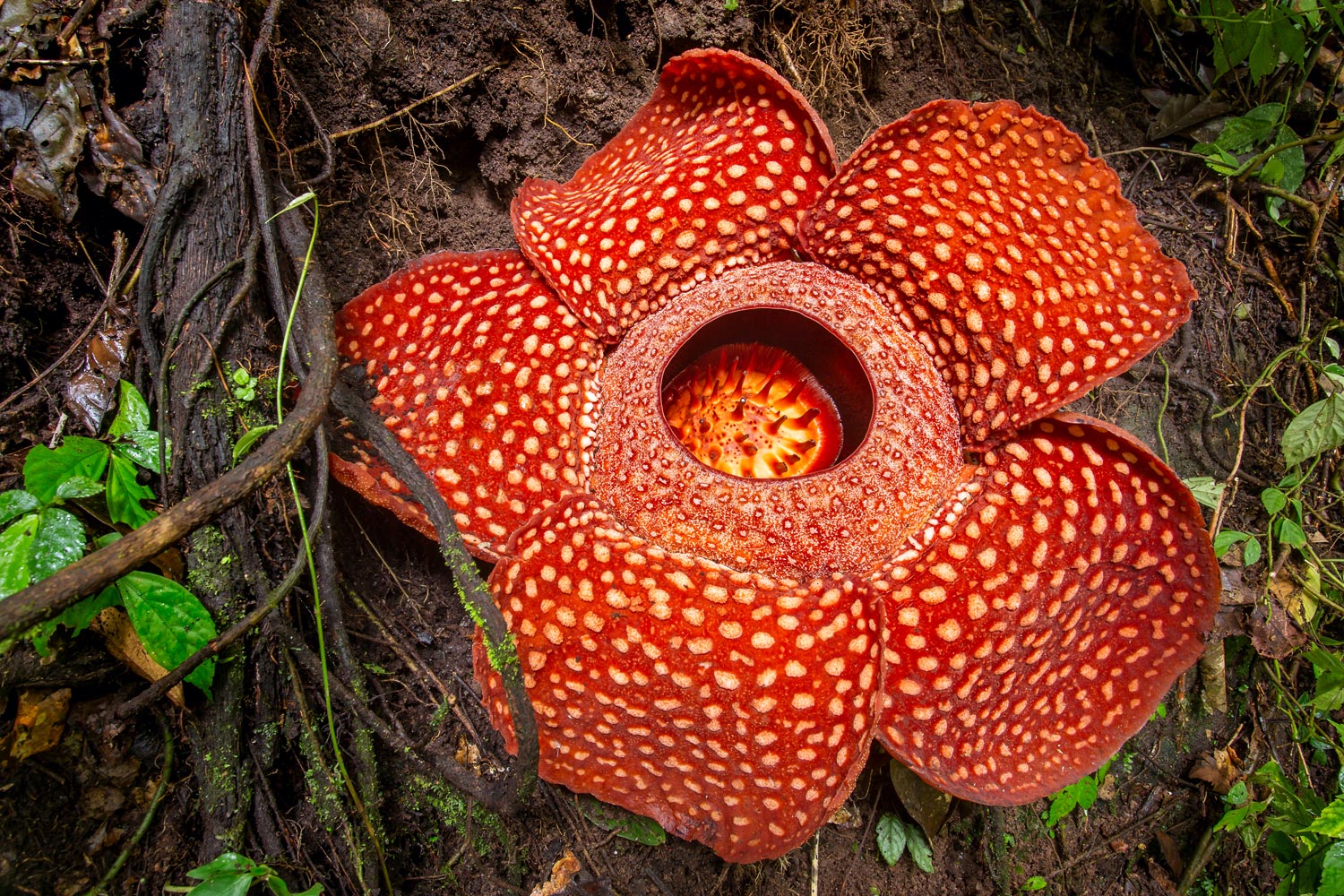
Flowering occurs in a short season in summer, so I didn’t get to it. We’ll have to go to Sumatra again.


